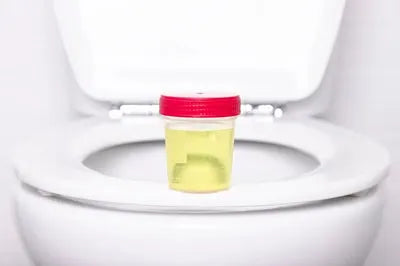2-3% of teenagers tackling obesity or nerve disease suffer from a loss of urinary control.
25% of women, for up to a year after childbirth, suffer from a loss of urinary control.
7% of athletes who train in high-intensity environments suffer from a loss of urinary control.
Nearly 30% of older men suffer from urinary control.
And yet, close to 0% of people speak about incontinence, stress incontinence, or the causes of urine incontinence, and while we remain silent, millions around the world suffer in silence, living each day with incontinence stress.
If you are one of them, this article is for you.
Urinary incontinence or the loss of urinary control occurs when the pelvic muscles or muscles around the bladder weaken or lose control. As a result, the body is unable to control the passage of urine, resulting in leakage.
The loss of urinary control could be caused by anything from a Urinary Tract Infection to Prostate Cancer. It may also be the result of obesity or childbirth. Broadly, there are four types of urinary incontinence.
Stress incontinence: The cause of this urine incontinence is when the pelvic floor muscles are weakened due to activities such as childbirth or being overweight. As a result of this, small amounts of urine leak out every time pressure is placed on the bladder while coughing, sneezing or laughing.
Urge incontinence: Also known as Overactive Bladder, the cause of this urine incontinence is either due to muscle or nerve damage in the bladder tissue. This results in your brain receiving mixed signals about your need to pee. This is characterized by sudden and frequent urges to urinate, especially at night.
Overflow incontinence: This form of incontinence is characterized by a constant need to urinate. The cause of this urine incontinence could be a blockage or the weakening of a muscle due to which the bladder is unable to empty itself.
Functional incontinence: This form of incontinence is when a person is either unable to get to a toilet, locate a toilet, or does not understand the need to use a toilet. The cause of this urine incontinence could be poor vision, mental health issues, physical barriers to using a toilet, cognitive issues (dementia, delirium, intellectual disabilities) or neurological or muscular issues such as arthritis.
HOW TO DEAL WITH INCONTINENCE?
Once you have identified the exact cause of urine incontinence, you can focus on dealing with incontinence stress.
You might have often wondered how to deal with urinary incontinence or how to control urine leakage? Here are some of your options for incontinence management:
KEGEL EXERCISES
Pelvic floor exercises or Kegels help greatly in managing urinary incontinence. They help tighten up the pelvic area by strengthening your muscles and supporting your organs. This helps improve bladder control and prevent urine leakage. According to research, those who practice Kegels are anywhere between 2.5-17 times more likely to recover completely from stress incontinence.
Pelvic floor muscles are pretty easy to exercise. All you have to do is to clench your pelvic muscles as if you are trying to stop the flow of urine midstream. Hold this position for ten seconds, and then let go. Repeat this 10-30 times.
BLADDER TRAINING
Sometimes our bladders can be very stubborn. Combining Kegel exercises with bladder training can do wonders, especially in those dealing with incontinence.
Bladder training is essentially behavioural therapy that aims to increase the time between urinations by allowing you to empty your bladder at will and not urge.
Those coping with incontinence land up visiting the bathroom more frequently out of fear. This habit worsens incontinence by causing the bladder muscles to get used to holding lesser urine than capacity. Bladder training helps control time limits so that each time the bladder is fully emptied. Since muscles control the bladder and the urethra, they can be trained and strengthened just like you would your biceps.
This process involves two steps:
Distraction and delay techniques: Sitting cross-legged, clenching fists, or thinking intensely about something to distract yourself can help in managing incontinence by delaying the urge.
Delaying urination: Delaying trips by even 5 minutes can be a good start. Slowly increase the delay, and soon, you’ll be able to build to 3-4 hours between bathroom visits.
LOSE WEIGHT
One of the main causes of urine incontinence is obesity. Men and women with high BMIs are twice as likely to suffer from incontinence due to the pressure the weight exerts on the bladder.
Including more fruits and vegetables in your diet and regular exercise can help maintain a healthy BMI and keep problems at bay. Your doctor may also recommend an abdominal belt to keep things down there tight and make sure you aren’t leaking urine.
To lose weight, you can either visit your dietician and get a recommended diet plan or get some high-intensity exercise. Adults are recommended to get 30-45 minutes of high-intensity exercise at least 4 times a week. This could include activities such as aerobics, running, swimming, gymming or power yoga.
PRACTISE YOGA
Various researches have found a direct link between the practice of yoga and urinary control.
Yoga helps tighten the muscles in the pelvic region, creating support for one’s bladder, resulting in up to 70% less urine leakage. Further, yoga allows for mindful relaxation, which helps purge the anxiety and depression that often cause incontinence in the first place. Apart from this, yoga has several other added benefits. These include the improvement of digestion, reduction of blood pressure, lowering of respiration rate, regulation of irregular menstrual cycles, strengthening of core muscles and relief from chronic pain in the vaginal areas.
To note: the process of yoga itself may exert pressure on the pelvic floor muscles, worsening one’s incontinence. However, practising yoga is a long-term investment. Simply 20-30 minutes of asanas with an adult diaper to prevent leaks could make a world of difference.
CUT OUT CAFFEINE AND ALCOHOL
Increased urine production is a common side effect of consuming caffeine and alcohol. An American Journal of Urology study found that “men who consumed more than 234 milligrams of caffeine daily were 72% more likely to have moderate to severe urinary incontinence than those who consumed none at all.” Thus, cutting out caffeine and alcohol could help the body function better by having to process only water and balance its input and output.
HAVE THE RIGHT ATTITUDE
While the causes of urine incontinence may be physical, one of the greatest impediments to its treatment is mental. Patients of incontinence, especially stress incontinence, often find it difficult to seek help because they are unable to communicate what they are going through.
The shame and embarrassment that prevents them from speaking up find strength in the taboos that surround the subject. Incontinence is seen as something shameful, and weak, as an inability—instead of a natural by-product of ageing that can be tackled with adult diapers and improved through exercises and medications. If none of this works, consider speaking to your health care professional about possible surgical treatments.
Keeping the right attitude in life, speaking about your condition openly and honestly, and understanding that incontinence is just one part of your life, and not all of it can make all the difference!
















